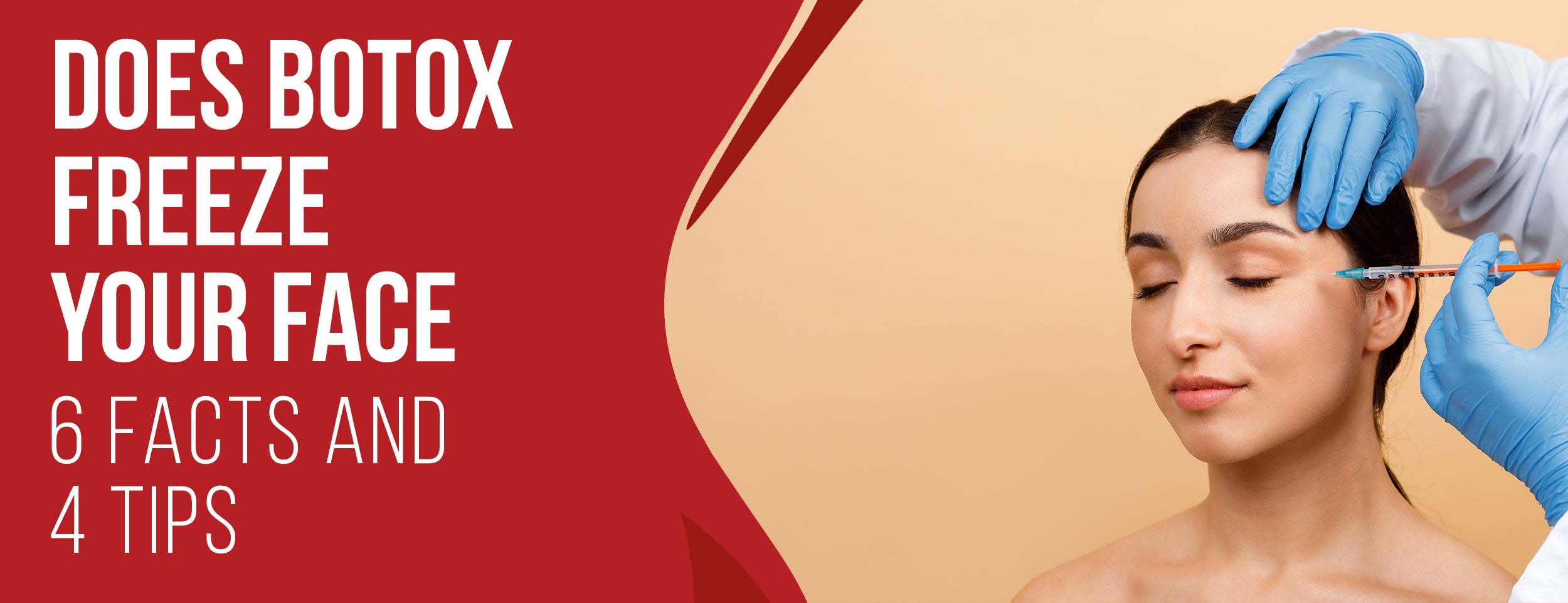Botox injections can cause flu-like symptoms because of the presence of botulinum toxin in the treatment. This neurotoxin blocks the signals that tell your muscles to contract, resulting in muscle relaxation and wrinkle reduction. However, since the body perceives the toxin as a foreign substance, it triggers an immune response that leads to flu-like symptoms.
A mild-to-moderate symptom usually appears shortly after botox treatment, and the feeling of flu typically lasts for 24 hours. The most common side effects are upper respiratory infection, fever, and tiredness.
In this blog post, we'll discuss how long flu-like symptoms last after botox, factors that affect the duration of flu-like symptoms after botox and tips for reducing the severity of flu-like symptoms.
How Long Do Flu Like Symptoms Last After Botox: 6 Reasons that Affect the Duration

An injection of botox can cause flu-like symptoms for 24 to 48 hours, or even a week sometimes. The duration of these symptoms varies from person to person, as everyone's reactions to the treatment can differ. The time of these symptoms can vary, depending on several factors. If you're considering botox, it's essential to understand what can affect the course of flu-like symptoms. Various factors can affect how long flu-like symptoms from botox last. These factors include:
Amount of Botox Injected
The amount injected can affect the duration of flu-like symptoms. The more botox is used, the higher the chance of experiencing these symptoms. If only a small amount of botox is used, the symptoms may not be as severe, which may mean a shorter duration.
Injection Site
The injection site can also influence the severity of flu-like symptoms. The symptoms may last longer if botox is injected in an area with more muscle movement, such as the forehead. This is because the muscle movement can cause the botox to spread to other nearby muscles, increasing the likelihood of flu-like symptoms.
Patient's Immune System
The immune system has a critical role in how the body reacts to botox. The flu-like symptoms may only last for a short time if the immune system is robust. These symptoms may linger more if the patient has a weaker immune system.

Pre-Treatment Habits
Pre-treatment habits can also affect how long flu-like symptoms last. Patients who smoke, consume alcohol regularly or have poor sleep habits may experience these symptoms for longer.
Type Of Botox Used
Different botox can have varying effects on the duration of flu-like symptoms. For example, some newer versions of botox may not cause flu-like symptoms at all. Older versions of botox may have a higher chance of causing these symptoms and may have a longer duration.
Aftercare
Proper aftercare also affects flu-like symptoms after botox. Inflammation and swelling can be reduced by avoiding strenuous exercise and staying hydrated. Taking an over-the-counter pain medication can help to ease any discomfort associated with the treatment.
9 Best Tips for Reducing Flu-Like Symptoms After Botox

If you are concerned about experiencing flu-like symptoms after botox, there are some steps you can take to reduce their severity. These include:
- Stay Hydrated: Water helps remove toxins from the body and relieve headaches.
- Rest: Take it easy and get enough sleep after your botox injections.
- Apply Ice or Cold Compresses: This can help reduce inflammation and discomfort at the injection site.
- Take Over-the-Counter Pain Relievers: Ibuprofen or acetaminophen can help ease symptoms such as headache and muscle aches.

Home Remedies for Managing Flu-Like Symptoms After Botox
You can also try some home remedies to manage flu-like symptoms if you prefer natural treatments. These include:
- Ginger Tea: Ginger can relieve sore muscles. Take a cup of hot water and steep fresh ginger in it as a tea.
- Epsom Salt bath: Epsom salts contain magnesium and can help ease muscle aches. You can add Epsom salt to a warm bath and soak it for 20 minutes.
- Turmeric Milk: Curcumin, a compound in turmeric, is pain-relieving. Take turmeric powder mixed with milk and honey before bed.
- Drink Plenty of Fluids: Staying hydrated is essential when experiencing flu-like symptoms. Drinking water and other fluids, like tea and clear broths, can help flush out toxins and ease symptoms.
- Use Essential Oils: Essential oils like peppermint and lavender have therapeutic benefits and can help ease flu-like symptoms. Rubbing diluted essential oils on your temples, neck, and chest can promote relaxation and improve breathing.
Medications and Treatments for Flu-Like Symptoms After Botox

If home remedies and over-the-counter pain relievers are not enough to ease your symptoms, prescription medications and treatments are also available. These include:
- Prescription Pain Relievers: If over-the-counter painkillers are ineffective, doctors may prescribe more powerful medications to relieve pain.
- Anti-Nausea Medication: When you experience nausea or vomiting, your doctor may prescribe medication to ease these symptoms.
- Hot Compresses: Applying heat to the injection site can also help ease symptoms.
- Antipyretics: These medications, such as acetaminophen, help lower your body temperature.
- Muscle Relaxants: Baclofen and other muscle relaxants can help ease muscle aches and stiffness.

Conclusion
Flu-like symptoms are a side effect of Botox, but they are temporary and resolve themselves. Patients should expect mild symptoms to last a few days and moderate-to-severe symptoms for one to two weeks.
If you are concerned about symptoms lasting for a long time following Botox, it is advised to consult your healthcare provider. Botox is safe and effective, with minimal side effects, and flu-like symptoms can be easily managed with proper care.

![6 Factors Affect [Duration] of Flu-like Symptoms After Botox](http://drnumb.com/cdn/shop/articles/How_Long_Do_Flu_Like_Symptoms_Last_After_Botox__6_Reasons_9_Tips.jpg?v=1703226639&width=1100)












